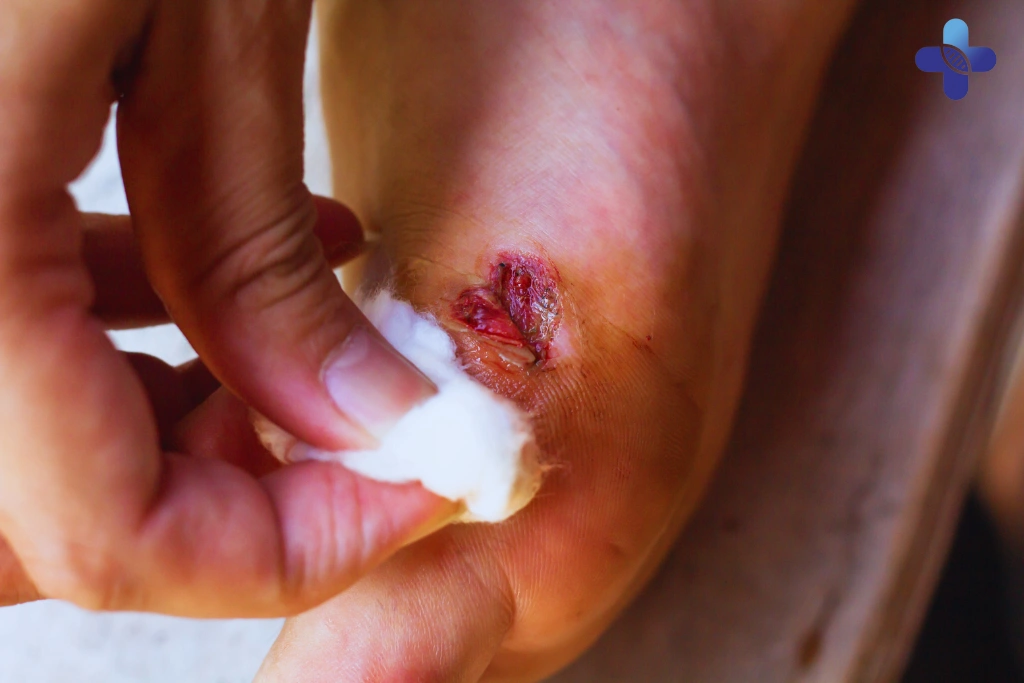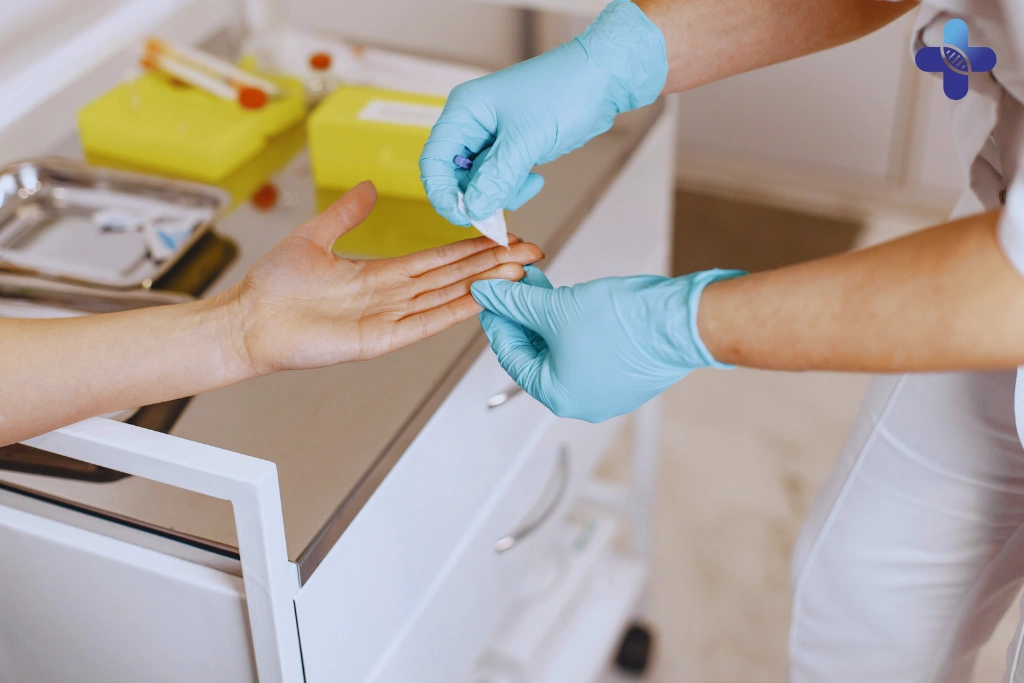A sudden fever in Bali can turn a relaxing getaway into a stressful experience. Whether you’re dealing with chills, headaches, or unexplained fatigue, it’s natural to feel concerned—especially when you’re far from home. Understanding the possible causes of fever in Bali is the first step to getting the right care. At Life Everyouth Bali, we want you to know that not all fevers are dangerous, but some could indicate tropical illnesses that need prompt medical attention. This guide from our trusted Medical Clinic in Bali will help you take calm, informed steps—so you can get back to enjoying your trip with peace of mind.
Is Your Bali Wound Infected? A Doctor Explains 5 Signs to Look For

You got a cut a few days ago—maybe from falling off a scooter, a sharp coral during snorkeling, or a minor accident on the street. You cleaned it, applied antiseptic, and hoped it would heal. But now, instead of getting better, it looks more irritated. It’s swollen, increasingly red, and possibly oozing.
This is a common scenario in tropical climates like Bali, where heat and humidity create the perfect environment for bacteria to thrive. At Life Everyouth Bali, we often treat travelers dealing with an infected cut in Bali that could have been caught earlier.
If you’re worried your wound isn’t healing properly, our doctors at the Medical Clinic in Bali have outlined the five most important wound infection signs. Recognizing these early can make all the difference in preventing serious complications.
Why Wounds Get Infected More Easily in Bali’s Climate
Bali’s warm, humid air may feel relaxing for vacationers—but it’s also ideal for bacteria to grow rapidly, especially on open skin. In tropical climates, wounds don’t just dry and heal like they might in cooler, drier places. Instead, the moisture can keep the area damp, delaying scabbing and encouraging infection.
At Life Everyouth Bali, we often see cases where a minor injury turns into an infected cut in Bali simply because bacteria thrive faster here. Organisms like Staphylococcus aureus and Pseudomonas are common in tropical regions and can quickly invade a wound, especially if it’s exposed to dirt, sweat, or seawater.
This is why our team at the Medical Clinic in Bali emphasizes early care and proper wound hygiene. Even with basic first aid, the environment here means you need to monitor your skin closely for any signs of infection. Don’t ignore what seems like a small issue—it may need professional wound care fast.
The 5 Telltale Signs of a Wound Infection
If you’ve been nursing an open cut or abrasion for a few days and things don’t seem right, you’re not alone. At Life Everyouth Bali, we frequently see travelers with seemingly minor injuries that turn into serious issues due to Bali’s tropical conditions. Knowing these five wound infection signs can help you determine whether it’s time to visit a Medical Clinic in Bali for treatment.
1. Increasing Redness and Swelling
A mild pink or red edge around a fresh wound is normal and expected during early healing. But when that redness starts spreading outward like a halo, or becomes more intense in color—think angry red or purple—it’s a red flag. Swelling that continues to expand or becomes firm to the touch is another indicator.
At Life Everyouth, our doctors regularly evaluate infected cuts in Bali that began as small scrapes but developed pronounced redness and swelling due to high humidity and bacterial exposure. This change in appearance is often the first visual cue that your immune system is losing control over the site of injury.
2. Pain That Gets Worse, Not Better
Healing wounds typically become less painful each day. The area may feel sore for the first 24–48 hours, but that pain should taper off. If instead you’re feeling sharper, throbbing pain days later—or pain returns after improving—that’s not normal. It likely indicates that infection has begun to irritate nerve endings or spread deeper into the surrounding tissue.
Many patients at our Bali Medical Clinic locations admit they thought they were “just being paranoid” about lingering pain, only to discover an active bacterial infection requiring antibiotics. At Life Everyouth Bali, we always advise: if pain escalates instead of fades, let a doctor take a closer look.
3. Pus or Oozing Fluid
Wound drainage can be confusing. A thin, watery fluid that’s clear or slightly yellow (serous fluid) is often part of healthy healing. But thick, sticky discharge that looks white, green, yellow, or even brown is pus—an unmistakable sign of infection. Pus may be accompanied by a foul smell or crusting around the wound edges.
If your wound in Bali is oozing this kind of fluid, especially several days after the injury, it’s time to stop applying over-the-counter antiseptics and seek professional care. At Life Everyouth, we frequently treat cases of infected road rash in Bali where pus production was the first—and most obvious—symptom ignored for too long.
If you notice pus or unusual discharge from your wound, don’t wait. Get expert wound care in Bali from the trusted team at Life Everyouth to prevent the infection from getting worse.
4. Warmth Around the Wound
When infection sets in, the body sends increased blood flow to the area. This often results in noticeable warmth when you gently touch the skin surrounding the wound. One simple method to test this is by using the back of your hand and comparing the wound site with nearby skin.
If the wound feels warmer—especially alongside swelling, redness, and pain—it’s a likely sign of infection. Patients who visit Life Everyouth Bali often describe it as a “hot patch” or say, “It feels like it’s burning.” This warmth signals inflammation, and our team at the Medical Clinic Bali treats it as a critical diagnostic clue.
5. Systemic Symptoms: Fever and Feeling Unwell
Perhaps the most serious of all warning signs is when your entire body starts reacting. A low-grade fever, chills, fatigue, headache, or even nausea may signal that the infection is no longer local—it’s spreading. If bacteria enter your bloodstream, conditions like cellulitis or sepsis can develop quickly in tropical environments.
This is when things move from uncomfortable to dangerous. At Life Everyouth, we urge patients not to dismiss these systemic symptoms. If you’re in Bali and feeling generally unwell alongside a suspicious wound, seek immediate care at a Medical Clinic in Bali to avoid serious complications. Early antibiotic treatment can prevent hospitalization and ensure a faster recovery.
Don’t “Wait and See”: The Risks of an Untreated Infection

It’s tempting to give it one more day. Maybe it’s just irritated. Maybe that extra dose of antiseptic will do the trick. But in Bali’s tropical climate, wounds that seem minor can deteriorate quickly. The heat and humidity create an ideal breeding ground for bacteria, which means infections can spread faster than you expect.
At Life Everyouth Bali, we’ve seen too many visitors wait too long—only to end up with cellulitis, a painful skin infection that spreads below the surface. In more severe cases, bacteria enter the bloodstream and lead to sepsis, a dangerous condition that requires hospitalization. These complications don’t come from deep knife wounds—they often begin with small cuts from coral, scooter accidents, or insect bites.
Topical antiseptics have their place, but once infection sets in, they’re no match for what’s happening inside the tissue. You need proper medical evaluation and, in most cases, a prescription for antibiotics.
An infected wound requires medical treatment, and that doesn’t mean you have to leave your villa or hotel room. To get the right diagnosis and prescription without the hassle of travel, let our on-call doctor from Life Everyouth come to you.
With professional care from a trusted Medical Clinic in Bali, you’ll get the wound properly cleaned, evaluated, and treated—fast. Book an on-call doctor now and get peace of mind today.
Conclusion Is Your Cut Infected? 5 Signs of Wound Infection in Bali (2025)

When you’re in paradise, the last thing you expect is for a small wound to become a serious health concern. But at Life Everyouth Bali, we know how quickly infections can take hold in a tropical setting. If you’ve noticed even one of the five signs—redness, swelling, pus, pain, or fever—it’s time to act.
Don’t rely on guesswork or wait for things to “settle down.” Trust your instincts. If something feels off, it probably is. Get your wound checked early at a trusted Medical Clinic in Bali before it leads to more complications.
At Life Everyouth, we offer fast, expert help—including doctor-on-call services—to treat your infected cut in Bali and help you recover quickly, so you can enjoy the rest of your trip with peace of mind.
Frequently Asked Questions (FAQ) Is Your Cut Infected? 5 Signs of Wound Infection in Bali (2025)
What is the difference between normal healing redness and an infection?
During normal healing, it’s common to see a thin red line just around the wound’s edges—this usually fades within a few days and doesn’t spread. In contrast, an infected wound shows redness that expands outward, becomes darker, and is often accompanied by swelling, tenderness, or heat. At Life Everyouth Bali, we help patients distinguish between normal inflammation and infection daily. If the redness grows or feels warm to the touch, it’s time to visit a trusted Medical Clinic in Bali for a proper evaluation.
My cut is leaking a clear or slightly yellowish fluid. Is this pus?
Not always. Clear or pale yellow watery fluid—called serous fluid—is part of your body’s normal healing process. It keeps the wound moist and supports tissue regeneration. However, if the fluid becomes thick, cloudy, smelly, or changes color to white, green, or dark yellow, it’s likely pus—a key indicator of bacterial infection. At Life Everyouth, we treat many travelers with this symptom, especially when a small injury becomes an infected cut in Bali. Don’t guess—have a professional confirm the condition.
Can I just put more Betadine or antiseptic on it?
Topical antiseptics like Betadine are helpful in the initial wound cleaning phase, but once an infection is present—especially if it’s beneath the skin—they’re no longer enough. You may need antibiotics to target bacteria deep in the tissue. Continuing to apply antiseptic alone can delay real treatment and worsen the infection. That’s why at Life Everyouth Bali, we recommend that any worsening wound be reviewed by a medical professional from a Medical Clinic in Bali to avoid complications.
Do I need oral antibiotics (pills) or is a cream enough?
It depends on how deep or widespread the infection is. Surface infections caught early may respond to medicated creams or ointments. However, if there’s swelling, pus, spreading redness, or systemic symptoms like fever, oral antibiotics are usually required. Our doctors at Life Everyouth assess your wound in-person to prescribe the correct form and dosage of medication. Don’t try to self-treat—visit a Bali Medical Clinic to avoid under-treating a serious condition.
What is a Staph infection?
A Staph infection is caused by Staphylococcus aureus, a type of bacteria commonly found on skin and surfaces. While it often lives harmlessly on the body, it can invade through cuts or abrasions and trigger painful skin infections. In Bali, we see many infected cuts due to Staph, especially after scooter accidents or beach injuries. These infections can worsen quickly and require professional wound cleaning and antibiotic treatment. Life Everyouth Bali handles these cases routinely at our Medical Clinic Bali facilities.
How quickly can a wound infection get serious in a tropical climate?
Faster than most people expect. In hot, humid conditions like those in Bali, bacteria multiply rapidly, and the skin remains damp longer—slowing healing and accelerating infection. What starts as a minor cut can become red, swollen, and painful in under 48 hours. At Life Everyouth, we treat visitors who ignored a small wound for just a day or two and ended up needing antibiotics. When in doubt, let our Medical Clinic in Bali check it early.
Should I keep my wound covered or let it “air out”?
In a dry climate, airing a wound may help. But in Bali’s humid air, exposed wounds can trap moisture, attract dirt, and worsen the infection. If your wound is infected or at risk, keep it clean, apply any prescribed treatment, and cover it with sterile gauze. Our doctors at Life Everyouth Bali often re-dress wounds daily for travelers who are healing. A covered wound heals faster and is less likely to be re-contaminated, especially in tropical environments.
Can I go swimming in the pool or ocean if I think my cut is infected?
No—absolutely not. Pools and oceans in Bali can contain bacteria like Pseudomonas or Vibrio, which can enter your open wound and make things significantly worse. Swimming with an infected cut in Bali increases the risk of deeper skin infections and delays healing. At Life Everyouth, we always advise patients to stay dry, keep the wound protected, and avoid swimming until fully cleared by a doctor at a Medical Clinic Bali location.
How can a doctor help with my infected wound at my hotel?
Our on-call doctors at Life Everyouth Bali are fully equipped to assess, clean, and treat infected wounds right where you are—no need to travel. They can evaluate the severity, prescribe oral or topical antibiotics, change the dressing, and even provide pain relief. This personalized wound care service from our Medical Clinic in Bali helps you recover safely and comfortably without leaving your hotel, villa, or Airbnb.
My original cut was from a scooter fall. Does that change things?
Yes. Road rash and scooter injuries are especially prone to infection due to dirt, debris, and friction burns embedded in the skin. These wounds often look superficial but can harbor bacteria deep below the surface. At Life Everyouth, we treat many infected road rash cases in Bali, particularly in tourists who initially cleaned the wound but didn’t get proper debridement or antibiotics. Don’t take risks—let a doctor from our Medical Clinic Bali ensure it’s healing safely.
